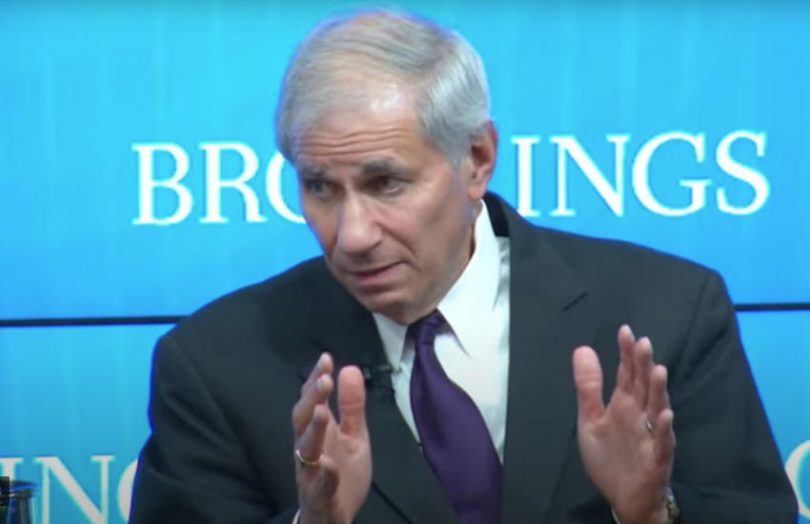Acting FDIC Chairman Martin Gruenberg regards payment stablecoins as those used for mainstream real–time payments as opposed to the existing stablecoins, which are primarily used within the crypto ecosystem. At a Brookings Institute event today, he said payment stablecoins should be issued on permissioned blockchains only.
His rationale is the ability to know all the participants, including nodes and validators, to enforce sanctions and anti-money laundering compliance.
Responding to a question after his speech, he said, “A public unpermissioned blockchain poses enormous challenges in terms of basic supervisory responsibility for safety and soundness, consumer protection and anti-money laundering. The(re is) potential for a permissioned blockchain where you can address those issues. If you’re going to consider the utilization of the technology within the banking system (it) seems to us to have much greater potential.”
Gordon Liao, the Chief Economist of USDC stablecoin issuer Circle, commented on a panel after the event, “We settled on a permissionless internet, which proved really valuable. Not to have siloed networks where you can only send email within your own network.” To address the concerns raised, he pointed to blockchain analytics as a tool for anti-money laundering and the enforcement of OFAC sanction lists.
Additionally, the FDIC’s Gruenberg wants to see stablecoin issuers coming under prudential regulation oversight and the stablecoins backed by short term treasuries.
Are stablecoins used for real world payments?
Circle’s Liao agreed with the strong backing of payment stablecoins. “Where I think the Chairman might have missed the mark is on the utility value of crypto that is emerging right now. As well as the bank versus non-bank issuance of payment stablecoins,” said Liao.
Gruenberg had earlier commented on crypto-assets more generally, “Thus far, we haven’t seen much evidence of benefit from crypto-asset activity,” particularly regarding financial inclusion.
Circle’s Liao identified the ability of stablecoins to bring down the costs of cross border payments, including low value remittances.
Regulators are assuming that current stablecoins are entirely used for cryptocurrency activities. Liao highlighted the purpose of many stablecoin transactions is not always clear. For example, 75% of USDC wallets are less than $100 and only 10% of USDC is held on exchanges. He later mentioned that 25% of transactions are person-to-person, not involving a smart contract.
“So it’s not entirely clear how much payment activities are real world payment activities versus speculative,” said Liao. (Author’s note: I have used USDC to make a couple of real world payments). However, the majority of value transacted is likely within the crypto ecosystem.
Regarding restricting stablecoin issuance to banks, Liao noted the Great Financial Crisis was partly because of the risky products and partly because banks were too big to fail.
“By unbundling payment functions from banking, starting with a proper way of regulating payment stablecoins and giving access to the Federal Reserve for non-banks, that could pave the way to reduce the overall financial system risk,” said Liao. In the past, Circle stated that it intended to become a bank.






